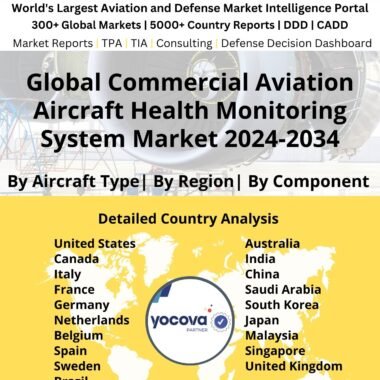Description
Auxiliary Power Unit Market
Frequently Asked Questions of APU Market
According to the definition, it is noted that an auxiliary power unit (APU) is an electronic device on a vehicle that is used to provide energy for functions other than propulsion. They are typically seen on big military ships and planes, as well as some large land vehicles. To power the aircraft’s electrical equipment, aviation APUs typically provide 115 V AC electricity at 400 Hz (as opposed to 50/60 Hz in the mains supply); however, some can also generate 28 V DC voltage. APUs are capable of supplying power via single- or three-phase systems. The first APU system was noted to have been developed during World War 2 by the German engineer Norbert Riedel. APUs are turbo shaft engines that are integrated into an aircraft and they can fulfill both the electric as well as the pneumatic requirements of the airplane. They are generally used when an aircraft is on the ground during the unavailability of a Ground Power Unit. During the main engine failure of the aircraft, it is noted that emergency power can be supplied by the APU. The integration of APUs into an aircraft is to prohibit the use of the main engine during ground operations to save fuel and reduce emissions.
Major factors driving the growth of the Auxiliary Power Unit market
It is noted that APU failure can result in imminent cancellation or delay of flights. Thus constant MRO and continuous monitoring of the hygiene of the aircraft are poised to maintain the health associated with the commercial aircraft APU. The growing market for commercial MRO is noted to be one of the main factors that are poised to drive the growth associated with the commercial aircraft APU Market. The MRO services are closely linked to the aftermarket services provided across the commercial aviation sector. An increase in the replacement of old fleet and the integration of new technologies onto older aircraft models is one of the factors which is anticipated to drive the growth of the global MRO market. Several OEMs are also seeking new aftermarket services owing to the cyclical fluctuation in new equipment sales, and the pressure of pricing. The growing maturity of this market is another factor that is presently leading to OEMs looking for other suppliers.
The rise in demand for fuel-efficient APUs is another factor that is poised to drive the growth associated with the commercial APU Market. The increased awareness regarding environmental degradation and the adoption of sustainable practices as well as the proliferation of green technology is poised to be one of the main factors driving the growth associated with this market. The development of new electric aircraft and the possibly high market penetration of the same is also poised to drive the growth of the APU vertical.
Trends influencing the growth of the Auxiliary Power Unit market
Traditionally used APU units are known to have a loud noise. However, manufacturers have been trying to rectify this design problem by implementing extensive research. Researchers have also developed mufflers and other protective ear equipment to preserve the hearing ability of people who work with the APU.
Auxiliary Power Unit Market Forecast & Dynamics
Market trends dictate that the aircraft APU market is closely linked to the global commercial aircraft MRO market. It is noted that an aircraft APU that requires maintenance after 7000 flight hours, would have a minimum maintenance cost of roughly USD 0.4 Million. Whenever a failure is reported, it is noted that an aircraft APU is replaced 50% of the time owing to the high cost associated with damage control during the event of a failure. Thus constant hygiene checks associated with the Commercial aircraft APU are of utmost importance to cut OPEX generated.
Auxiliary Power Unit Market Analysis for Recent Developments
As of 2018, it was noted that the companies Boeing and Safran entered an alliance to develop aircraft APUs. The partnership had a 50-50 shareholding pattern. The design, development as well as servicing was a part of the proposed model. This partnership was poised to threaten the market dominance of two players including Honeywell and United Technologies. Honeywell was noted to hold a market share of roughly 65% within the mainliner APU market as of 2017. The company is noted to be the sole supplier of APU units to single liners including Airbus A350, the Boeing 777, and all single-aisles: the Boeing 737 MAX, Airbus A220 (formerly Bombardier CSeries), Comac C919, Irkut MC-21, and Airbus A320neo. The elimination of P&WC APS3200 option was eliminated by the company Airbus which opened market opportunities for Boeing. The company, P&WC was noted to have claimed the remaining 35% in 2017 with the Airbus A380, Boeing 787, and Boeing 747-8.
Honeywell announced two agreements that will expand the company’s support network in the Middle East and North Africa. The 10-year agreement with Saudia Technic includes a global license to service the Boeing 777’s 331-500 auxiliary power unit. Honeywell’s first authorized service center in the Middle East for the 777’s APU will be the full-service MRO organization.Saudia Technic, formerly known as Saudi Arabian Aerospace Engineering Industries, is constructing an MRO Village in Jeddah to inspect, repair, overhaul, and upgrade APUs. The 331-500 agreement is in addition to a 10-year agreement announced in 2021 for Saudi Technic to become an authorized service center for the 131-9 APU model installed on Boeing 737 and Airbus A320 aircraft. In a separate five-year agreement, Egyptair Maintenance and Engineering was granted a license to provide a flat-rate component repair service for its sister airline’s aircraft. The agreement covers Egyptair’s Airbus A320 and A330 aircraft, as well as Boeing’s 737 and 777.






